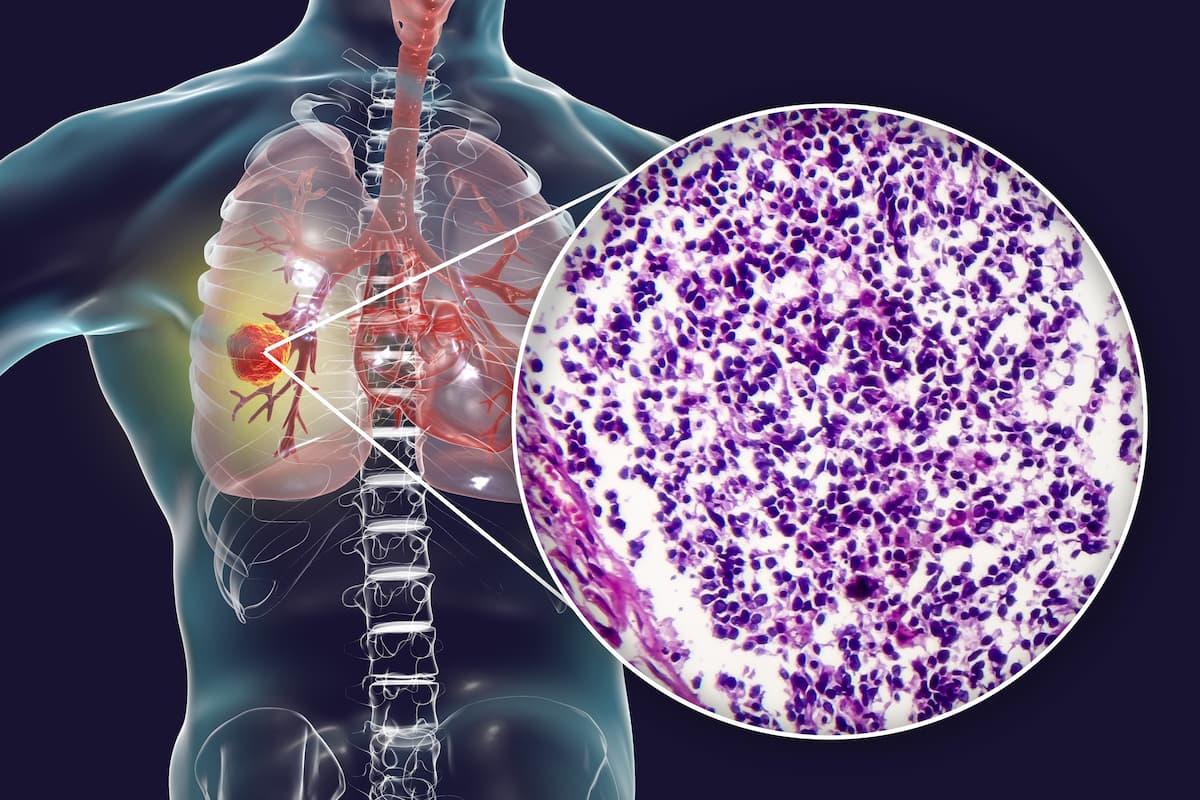High-Dose Radiotherapy Plus Chemotherapy Is Effective in Locally Advanced NSCLC
Treating patients with NSCLC with stereotactic ablative radiotherapy and chemotherapy reduces toxicity, according to a study conducted by UCLA.
Because of the safety profiles and rates of control in each cohort, study authors have determined that the intermediate-dose level of SABR is the optimal regimen for this patient population.

A combination of high-dose stereotactic ablative radiation (SABR) plus chemotherapy showed an acceptable safety profile and efficacy as a treatment for patients with locally advanced non–small cell lung cancer that is not suitable for surgery, according to a study conducted by University of California Los Angeles (UCLA) Health Jonsson Comprehensive Cancer Center.1
In patients who received low-dose (n = 10), intermediate-dose (n = 9), and high-dose SABR (n = 9), the rates of 2-year local control were 74.1%, 85.7%, and 100.0%, respectfully. The 2-year overall survival (OS) rates were 30.0%, 76.2%, and 55.6%, respectively.
“This treatment method explores uncharted territory,” lead study author Trudy Wu, MD, radiation oncology resident at UCLA said in a press release regarding the study.2 “Our field has been moving towards hypofractionation across many disease sites; however, it is particularly challenging in locally advanced lung cancer due to the close vicinity of tumor to sensitive structures such as the airways and esophagus. This treatment is also typically delivered with chemotherapy which magnifies treatment-related toxicity. Using a novel adaptive boost technique personalized to an individual’s treatment response after the first two-thirds of radiation treatment allows for a tighter conformal radiation boost plan and reduction of healthy tissue receiving radiation.”
This early-phase, dose-escalation, nonrandomized controlled trial included 28 patients who were separated among 3 dose cohorts. All patients received 4 Gy × 10 fractions of SABR followed by 25 Gy (5 Gy × 5 fractions), 30 Gy (6 Gy × 5 fractions), or 35 Gy (7 Gy × 5 fractions), known as adaptive SABR boosts, for low-, -intermediate-, and high-dose levels, respectively, followed by concurrent weekly carboplatin/paclitaxel.1 Patients were able to advance to a higher SABR boost dose depending on the rate of grade 3 pulmonary, gastrointestinal, or cardiac adverse effects (AEs) and grade 4 or higher nonhematologic AEs.
The primary end point of this study was to determine the maximum-tolerated dose. Secondary end points included progression-free survival and decreasing the time of treatment.
Regarding baseline characteristics, the median age was 70 years (range, 51-88), 57% were male, and 86% of patients had stage III disease.
Grade 3 or higher nonhematologic acute and late AEs that were reported over 90 days after treatment occurred in 11% and 7% of patients overall, respectively. No grade 3 AEs were reported in the intermediate-dose cohort; mild AEs included fatigue and inflammation of the esophagus or lungs, which resulted in sore throat or cough, respectively. Two patients reported severe treatment-related AEs in the high-dose cohort, and 2 deaths in the high-dose cohort were reported.
Because of the safety profiles and rates of control in each cohort, study authors have determined that the intermediate-dose level of SABR is the optimal regimen for this patient population.
“Our data shows patients may benefit from targeted, high-dose radiation with chemotherapy if it’s done thoughtfully with adaptive radiation,” said Beth Neilsen, MD, PhD, study author and radiation oncology resident at UCLA.2 “For the intermediate-dose regimen, the incidence of severe side effects was relatively low and showed potential for better local control of the cancer.”
The investigators pointed to the limitations of the study, which include the small sample size and the need for longer follow-up assessments regarding AEs. Future trials may include consolidation immunotherapy, which is the current standard of care.
References
- Wu TC, Luterstein E, Neilsen BK, et al. Accelerated hypofractionated chemoradiation followed by stereotactic ablative radiotherapy boost for locally advanced, unresectable non–small cell lung cancer: a nonrandomized controlled trial. JAMA Oncol. Published online January 11, 2024. doi:10.1001/jamaoncol.2023.6033
- Heady D. High-dose radiotherapy with chemotherapy effective in treating people with non-small cell lung cancer. Uclahealth.org. News release. January 11, 2024. Accessed January 15, 2024. http://tinyurl.com/3u3ya3yz